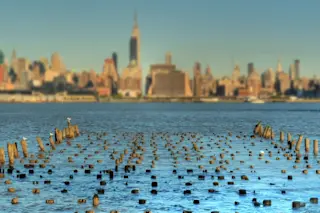Imagine the Statue of Liberty, water lapping at her skirts. Or the Sydney Opera House, seawater filling its seats.
Coastal areas around the globe are losing ground to the sea — and faster than ever. In the past quarter-century alone, the ocean has risen an average of almost 3 inches.
With nearly half the world’s population living within 93 miles of a coast, and much of the globe’s commerce concentrated there, sea level rise looms as one of the greatest of all climate change threats.
Given the vastness of the oceans, it may be hard to imagine that warming seas and melting glaciers could raise sea levels enough to inundate thousands of miles of coastline. But adding an inch of water to a full bathtub can still soak the floor — it won’t take much to flood the world’s cities and ecosystems.
Sea Level Science
Unlike other climate issues, the ...














